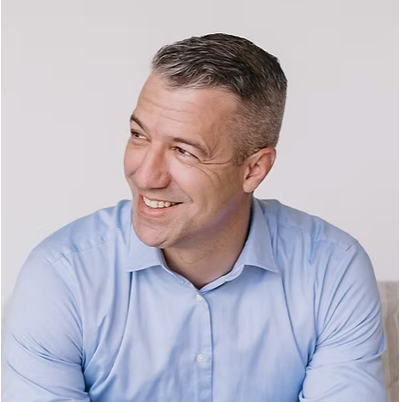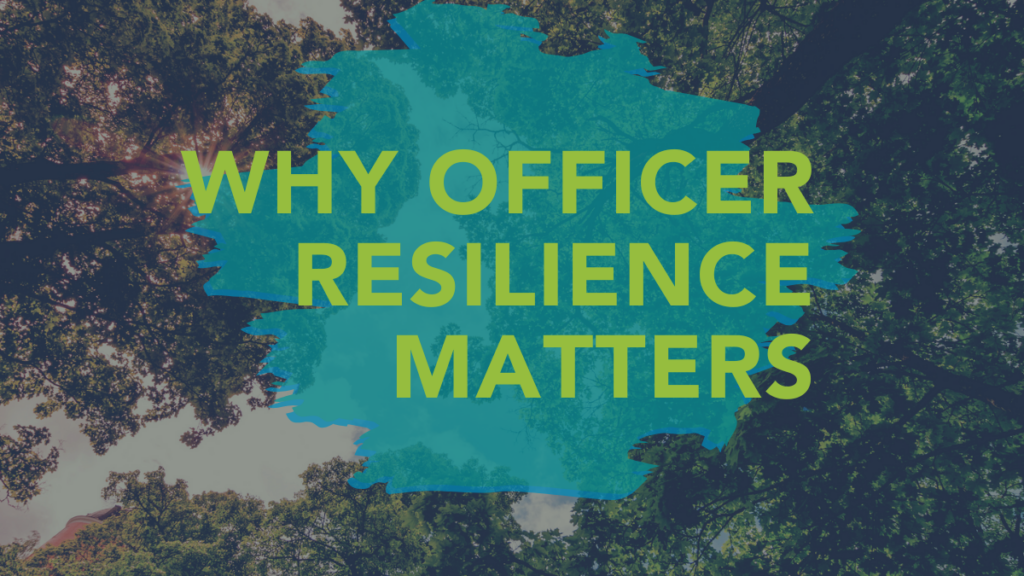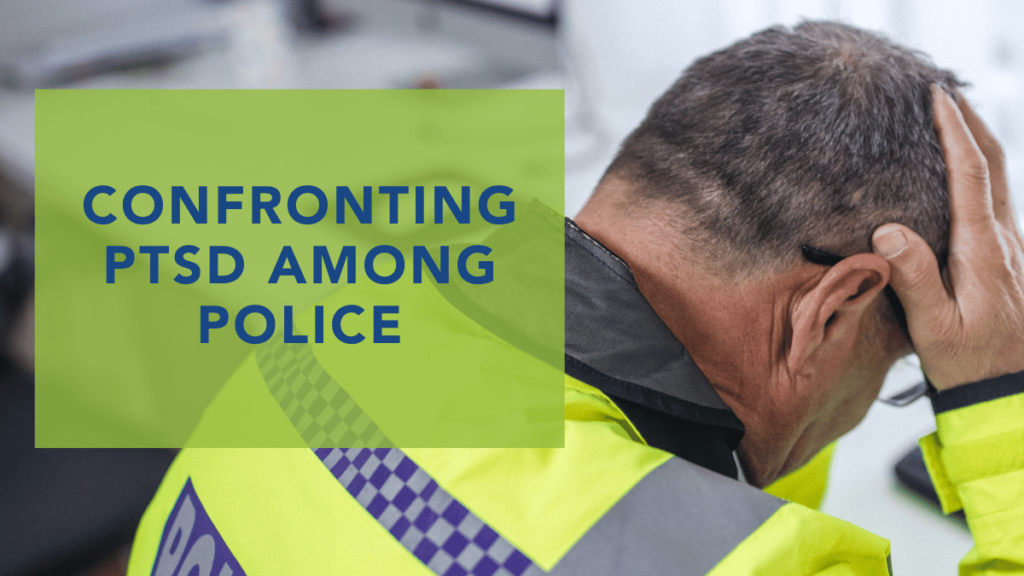My Wellness Journey – From Crisis to Action in Law Enforcement Wellness
Posted
February 7, 2025
Share:
At IACP 2024, I spoke about a subject that has defined much of my career: officer wellness. It’s a topic that often gets overshadowed by crime stats, policy debates, and operational tactics, but in reality, it’s one of the most critical aspects of policing.
The Night Everything Changed October 1, 2017
While my career has had many defining moments, nothing impacted me more than responding to the largest mass shooting in U.S. history. That night, I was training dogs when I heard the unmistakable sound of automatic gunfire over the radio. My heart sank. I knew something catastrophic was unfolding, but I had no idea just how devastating it would be. Within minutes, I was in my vehicle, racing toward the Mandalay Bay, mentally preparing for the unknown.
Stepping Into Chaos
When I arrived on scene, the radio chatter was pure chaos—reports of gunfire, injured civilians, and officers trying to locate the shooter. We had no idea how many shooters there were, where the shots were coming from, or what we were walking into. I forced myself to push aside the uncertainty and focus. This was what we trained for, but nothing could truly prepare us for the scale of what was happening.
I moved with my team through the hotel, clearing hallways, directing people to safety, and trying to piece together information. When we reached the 32nd floor, it was eerily silent. The contrast from the deafening chaos below was unsettling. We breached the suspect’s room, stepping over broken glass, spent shell casings, and twenty-three rifles. We found him dead from a self-inflicted gunshot. Relief should have set in, but it didn’t. The damage was done. Fifty-eight lives were lost that night, and hundreds more were forever changed.
The Emotional Weight of That Night
In the hours that followed, there was no time to process. Reports of additional shooters kept pouring in. Misinformation flooded our radios and forced us to clear casinos, parking garages, and hotels across the strip. My adrenaline was on overdrive, but beneath it all, I felt numb. The sheer scale of the tragedy was too much to grasp in the moment.
Eventually, the sun rose over Las Vegas. After twelve hours of securing properties, responding to calls, and working through the aftermath, I went home. But home didn’t feel the same. Sleep didn’t come. My mind replayed every moment, every face, every decision. The weight of it all settled in, and I realized that this wasn’t something I could just push through.
How That Night Changed My Perspective on Wellness
Before October 1, I thought I understood resilience. I had been through difficult situations before, but nothing compared to this. The impact of that night didn’t end when my shift was over. It lived in the nightmares, in the sleepless nights, in the moments of silence that felt too loud. I saw the same weight in my fellow officers, many of whom tried to bury it under long hours and avoidance.
That was when I truly realized that wellness in law enforcement couldn’t just be about physical fitness or checking a box for mental health awareness. It had to be about resilience—giving officers the tools to process trauma, to acknowledge their struggles, and to seek help without fear. It wasn’t enough to just survive the job; we needed to ensure officers had the support to actually live beyond it.
The hardest part was that I didn’t process my own trauma either. Like many officers, I told myself I was fine. I didn’t even recognize what I was feeling because, as cops, we aren’t trained to process emotions. I knew when I felt “good” or “bad,” but anything beyond that was unclear. So I did what many others do—I threw myself into helping others and avoided my own pain. I lied to myself, saying I was fine when, in reality, I wasn’t. It took me years to understand that trauma doesn’t just go away. You don’t heal from it; you process it, and over time, you grow stronger. But even today, I still work through it. I’m still in therapy, and honestly, I should probably go more.
The stigma around mental health in policing makes it even harder. We talk about trauma and the horrors we see on the job, but we often forget that officers still have everyday stress—bills to pay, families to take care of, personal struggles outside the uniform. The weight of the job doesn’t erase those things, it adds to them. If we only focus on the big moments of trauma, we miss the full picture of what officers go through every single day.
The Beginning of a Mission
After the events of October 1, 2017, I found myself grappling with the long-term effects of trauma, both personally and within my department. Officers were suffering, and many were doing so in silence. My role in the response to that tragedy made it clear that our agency needed a more structured and proactive approach to wellness. That was when the sheriff called me. He wanted to create a wellness bureau—and he wanted me to lead it.
For so many officers, our struggles remain invisible. We suffer in silence, burying stress under long hours, tough calls, and the expectation to just keep going. I took on the role, not because I had all the answers, but because I knew firsthand how critical it was to build something better for our officers.
Initially, I had serious concerns. What did I truly know about wellness beyond my own personal experiences? How could I ensure that the program wasn’t just another bureaucratic initiative that would fail to make a real impact? I worried about the skepticism from my fellow officers—law enforcement is a culture built on toughness and resilience, and I knew that introducing a wellness program would be met with resistance.
Additionally, I was stepping into uncharted territory. There was no blueprint, no established model to follow. I was essentially starting from scratch, figuring out how to create a program that officers would actually trust and use. I questioned whether the administration would back me when tough decisions needed to be made, whether officers would feel safe enough to participate, and if we could change a deeply ingrained culture of silence around mental health.
Despite these uncertainties, I knew one thing for certain: ignoring wellness wasn’t an option. I had seen too many officers suffer in silence, using unhealthy coping mechanisms like drinking to get through the stress and trauma of the job. I had lived it myself. If there was a way to change that, I had to try.
Building a Program with Focus
Stepping into the role of building a wellness program, I quickly realized just how overwhelming it could be. From the moment we started, my calendar was filled with meetings—people pitching different approaches, from therapy dogs to goat yoga. With so many options and voices, I had to take a step back and ask: What do our officers really need? What will actually make a difference in their day-to-day lives and long-term well-being?
The first step was breaking down silos. Our department had resources, but they were scattered: peer support in one building, clinicians somewhere else, fitness programs disconnected from mental health. We brought everything under one roof and focused on three key elements:
I’ve often discussed the distinction between wellness and resilience. While wellness is a broad and sometimes vague term, resilience is more actionable. Resilience, as I define it, is “the ability to experience trauma and still perform both mentally and physically, in a job or in life in general.” By focusing on resilience, I aimed to equip officers with the tools they needed to process stress, maintain their mental health, and continue performing at a high level despite the challenges they faced.
Our department had resources, but they were scattered: peer support in one building, clinicians somewhere else, fitness programs disconnected from mental health. We brought everything under one roof and focused on three key elements:
- Accessibility to Clinicians – When an officer reaches out for help, they need it now, not in two weeks. We hired our own in-house clinicians with open office hours, so officers could walk in anytime.
- Physical Fitness as Mental Fitness – Research shows that exercise can be as effective as antidepressants. We worked to incorporate fitness as a key component of mental health.
- Cultural Shift Toward Resilience – Officers don’t need to be told what wellness should mean to them. We conducted department-wide surveys, listening to what officers wanted. The goal was to create a culture where asking for help was seen as a strength, not a weakness.
What I Wish I Had Done Differently
Looking back, there are things I wish I had done differently, particularly in leveraging technology and data to make the wellness program more effective.
Using Technology for Early Intervention
One of the biggest challenges in law enforcement wellness is identifying officers in need before they reach a breaking point. Many officers will never voluntarily come forward due to stigma or fear of professional consequences. If I had implemented better data tracking and analysis tools, we could have proactively identified at-risk officers based on behavioral patterns, absenteeism, performance changes, or incident exposure.
Streamlining Processes with Digital Platforms
Wellness programs require streamlined access to resources. Instead of relying on manual outreach and word-of-mouth, we could have developed a digital hub where officers could confidentially schedule appointments with clinicians, access self-help materials, and track their own wellness progress. This would have made the process less intimidating and far more accessible to those hesitant to seek help in person.
Enhancing Peer Support Through Data-Driven Insights
Peer support is critical in breaking down barriers to mental health care, but it needs structure. Using technology, we could have built a better framework for matching officers with peer supporters based on shared experiences and backgrounds. This would have made outreach efforts more personalized and effective, ensuring officers received the right kind of support at the right time.
The Long Road to Healing
Trauma doesn’t disappear when an incident is over. It lingers, sometimes for years, shaping how officers process stress and interact with the world around them. Acknowledging trauma is one of the hardest steps, but it’s also one of the most important.
For many officers, seeking help feels like an admission of weakness, but the reality is quite the opposite. It takes immense strength to confront the mental and emotional toll of this job. We need to normalize therapy, peer support, and proactive wellness checks so officers don’t reach their breaking point before getting the support they need.
Continued wellness support is key—not just after a critical incident, but throughout an officer’s career. Regular check-ins, resilience training, and peer mentorship can make all the difference in ensuring officers are not just surviving their careers, but thriving in them.
Takeaways for Law Enforcement
- Wellness Must Be Structured – Agencies need clear, accessible, and ongoing wellness programs that include professional mental health support, physical fitness initiatives, and peer support systems.
- Leadership Sets the Tone – If agency leadership prioritizes wellness, officers are more likely to engage with the available resources. Command staff must openly support and participate in wellness programs.
- Address the Stigma – Officers should feel safe seeking help without fear of professional repercussions. Normalizing conversations about mental health can help break down the barriers that keep officers from reaching out.
- Not All Wellness Programs Are Created Equal – Generic wellness initiatives often fail to address the unique challenges officers face. Agencies should prioritize interventions tailored specifically for law enforcement, ensuring that mental health resources, training, and peer support programs align with the realities of the job.
About the Author

Josh Bitsko is a retired law enforcement officer with over two decades of experience in policing, training, and wellness program development. Over his 24-year career with the Las Vegas Metropolitan Police Department, he served in various roles, including as a canine handler, child abuse detective, internal affairs investigator, and captain of the Las Vegas Strip. His frontline experience responding to critical incidents, including the October 1, 2017, mass shooting, shaped his passion for officer wellness and resilience.
Recognizing the urgent need for better mental health support in law enforcement, Josh spearheaded the creation of LVMPD’s Wellness Bureau, developing programs that addressed the unique challenges officers face. Under his leadership, the bureau expanded access to culturally competent clinicians, peer support initiatives, and resilience-based training. Now serving as the Vice President of Wellness Programs at Benchmark, Josh works with law enforcement agencies nationwide to implement data-driven wellness strategies. His mission remains the same: to ensure that no officer suffers in silence and that departments prioritize the well-being of those who serve their communities every day.
Related Posts
Ready to Experience the Benchmark Difference?
Benchmark Analytics and its powerful suite of solutions can help you turn your agency’s challenges into opportunities. Get in touch with our expert team today.






